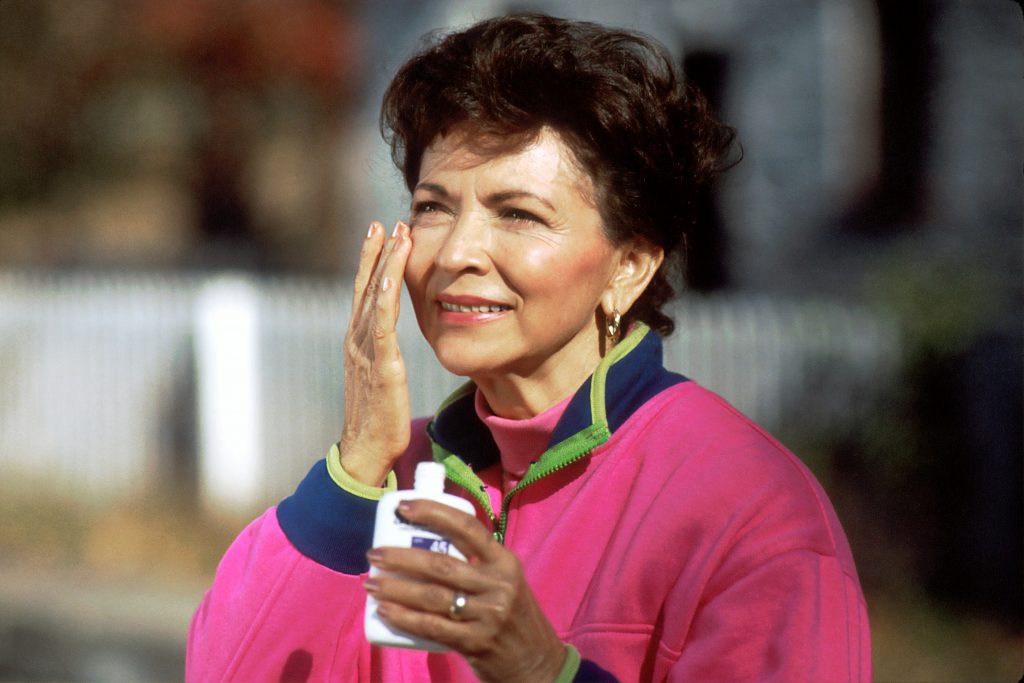The chemistry of sunscreen is more than a label of unfamiliar ingredients. It is a molecular defence system designed to transform high-energy ultraviolet (UV) radiation into harmless heat or light before that energy can damage skin cells. Knowing how filters absorb, scatter, and dissipate UV helps you pick an effective, reef-safe product and apply it correctly. It also explains why re-application, SPF ratings, and “broad-spectrum” claims are not cosmetic marketing but measurable chemical realities.
UV Radiation in a Nutshell
| UV Band | Wavelength (nm) | Skin Impact | Penetration to Earth |
|---|---|---|---|
| UVC | 100 – 280 | Germicidal; destroys DNA but is filtered by ozone | Negligible |
| UVB | 280 – 315 | Sunburn, direct DNA dimer formation, most cancers | ≈ 5 % of solar UV |
| UVA | 315 – 400 | Photo-ageing, deeper dermal damage, indirect DNA harm | ≈ 95 % of solar UV |
Only a formula that blocks both UVA and UVB can truly claim broad-spectrum protection, because each band triggers a different cascade of photochemical skin damage.
Active Ingredients: Two Molecular Strategies
Organic (Chemical) Filters
Organic UV filters are aromatic rings with conjugated double bonds. Those bonds absorb photon energy, temporarily shifting to an excited state, then release that energy as low-grade heat through internal conversion. Thanks to substituent groups, each molecule targets a specific UV window.
| Filter | Primary Range | Notable Chemistry |
|---|---|---|
| Avobenzone | UVA (310–400 nm) | β-Diketo structure; stabilized by resonance |
| Octyl Salicylate | UVB (290–320 nm) | Salicylate ester; oil-soluble, boosts water resistance |
| Oxybenzone | UVB & short-UVA | Benzophenone; strong absorber but reef-restricted in some regions |
Advantages: transparent finish, high molar absorptivity, lightweight feel.
Drawbacks: potential photodegradation and rare allergic reactions; some environmental concerns for coral reefs.
Inorganic (Mineral) Filters
Micronised titanium dioxide (TiO₂) and zinc oxide (ZnO) behave like semiconductor crystals. They reflect and scatter UV photons but also absorb via band-gap transitions when particle size falls below ≈ 100 nm, covering a broad UV spectrum.
Advantages: inherently photostable, minimal irritation, immediate protection.
Drawbacks: visible white cast in traditional form; nano-sizing improves aesthetics yet raises questions about inhalation in sprays.
The Science Behind SPF
SPF (Sun Protection Factor) quantifies only UVB protection. In vivo, volunteers apply 2 mg cm⁻² of product, then skin is exposed to UVB lamps until minimal redness (MED) appears.
SPF = MED_with_sunscreen ÷ MED_without_sunscreenBlocking efficiency rises asymptotically: SPF 30 blocks ≈ 97 % of UVB, SPF 50 about 98 %. Higher SPF numbers give diminishing gains but buffer against under-application, the most common user error.
UVA Ratings
Different regions use different metrics:
- PA system (PA+, PA++, PA+++, PA++++) in Asia measures persistent pigment darkening.
- Boots Star Rating (UK) compares UVA absorbance to UVB.
- UVA circle logo (EU) requires UVA-PF ≥ 1/3 of labelled SPF.
Photostability and Synergists
Many organic filters lose efficacy after absorbing dozens of photons. Chemists employ stabilising partners:
- Octocrylene donates energy to avobenzone, returning it to the ground state without bond cleavage.
- Bis-ethylhexyloxyphenol methoxyphenyl triazine (BEMT) is inherently photostable and shares the load across UVA.
- Antioxidants such as vitamin E intercept free radicals before they initiate lipid peroxidation in skin.
- Silica-coated ZnO prevents photocatalytic generation of reactive oxygen species that could otherwise degrade neighbouring organic filters.
Delivery Systems: Making Chemistry Work on Skin
- Oil-in-water emulsions balance spreadability with cosmetic elegance. Hydrophilic emulsifiers create micelles that lock oil-soluble filters in a stable lattice.
- Water-in-oil emulsions yield high water resistance; droplets of water are trapped in an oil continuum—common in sport sunscreens.
- Anhydrous sticks and balms use waxy matrices for lip or facial zones, eliminating water that could destabilise certain UV filters.
- Nano-capsules and liposomes encase sensitive filters, improving stability and reducing skin penetration.
- Film-forming polymers (e.g., acrylates/octylacrylamide copolymer) crosslink upon drying, anchoring filters even during perspiration.
Safety and Absorption Myths
Systemic uptake: FDA studies detected nanogram-per-millilitre levels of avobenzone, oxybenzone, and octocrylene in plasma after maximal usage. Toxicologists note these levels remain hundreds-to-thousands-fold below NOAEL thresholds.
Endocrine disruption: In vitro assays show weak activity for oxybenzone; epidemiological data in humans remain inconclusive. Nevertheless, oxybenzone-free products meet consumer demand.
Nanoparticle penetration: Both ZnO and TiO₂ nanoparticles aggregate in the stratum corneum and sweat ducts; transmission electron microscopy shows negligible migration into living epidermis.
Environmental Considerations
Field studies suggest certain benzophenone filters accelerate coral bleaching in confined bays. The precise mechanism involves oxidative stress and viral lysis of symbiotic zooxanthellae. Some jurisdictions ban oxybenzone and octinoxate. Mineral filters and next-generation organic molecules such as bemotrizinol and bisoctrizole exhibit lower aquatic toxicity.
Practical Tips Grounded in Chemistry
- Measure, don’t guess — Adults need roughly 30 ml (two tablespoons) for full-body coverage.
- Re-apply after swimming or towelling — even water-resistant formulas lose > 20 % film integrity after 40 minutes immersion.
- Pair sunscreen with antioxidants — topical vitamin C serum under SPF neutralises residual reactive oxygen species.
- Mind your moisturiser order — apply water-based serums first, then sunscreen, then makeup; mixing can dilute filter concentration below labeled SPF.
- Do not rely on SPF in foundation alone — typical makeup application is one-quarter of the tested amount.
Future Directions in Sunscreen Chemistry
- Terephthalylidene dicamphor sulfonic acid (Mexoryl SX) and bis-diethylamino hydroxybenzoyl hexyl benzoate (Uvinul A+) provide exceptional UVA I coverage but await broader regulatory acceptance.
- Photolyase liposomes and endonuclease-loaded hydrogels may repair DNA lesions post-exposure, shifting protection from preventive to restorative.
- Smart textiles embed ZnO nanofibres into fabric for passive UV shielding without lotion.
- Phase-change microparticles release extra antioxidants when skin temperature exceeds 32 °C, matching high UV periods.
Conclusion
From aromatic absorbers that quench photon energy to nano-scale mineral reflectors, the chemistry of sunscreen demonstrates how molecular engineering translates into daily health protection. Apply enough, top up often, choose broad-spectrum or reef-safe labels when required, and sunlight becomes safe light — courtesy of chemistry.

